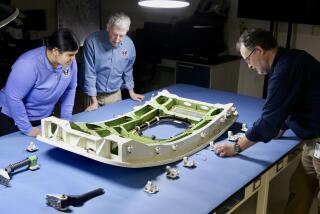FAA Insisting on 10 Exits for New 747s
- Share via
WASHINGTON — The new generation of Boeing 747 airliners will be required to have 10 exit doors, rather than the eight the manufacturer would prefer, the chief of the Federal Aviation Administration said Wednesday.
The additional set of doors was sought by groups including the flight attendants and airline pilots unions, who argue that the extra exits would make evacuations safer.
Officials from Boeing say the aircraft would be just as safe with only eight doors and argue that the added exits would reduce the number of seats and make the planes less attractive to buyers.
The 747s in use by U.S. carriers have 10 doors, but the firm wanted to build its new version with only eight. Some foreign airlines have eight doors on their 747s.
Allan McArtor, FAA administrator, announced his decision to the House Public Works investigation subcommittee. He said that barring an unexpected rejection by top Administration officials, the new rule should be completed by late summer.
“Prudence,” McArtor said when asked during a break in the hearing about why he had made his decision. “Just a concern of safety.”
Carry 500 Passengers
The wide-body 747s are the most commonly used transoceanic passenger jetliners and are also used on some coast-to-coast flights in the United States. They can carry more than 500 passengers.
The first generation of 747s entered use in 1970. Boeing has so far taken orders for 117 of the new models, and plans to make the first deliveries in December.
The FAA rule will require that exit doors in U.S. airliners be no further than 60 feet apart. In effect, this will require Boeing to install 10 doors on the new aircraft.
Orvil M. Roetman, a Boeing vice president, told the subcommittee that tests had shown that eight-door 747s can be evacuated safely after an accident.
He also said that to provide aisles to the two extra doors, each aircraft would lose an average of 12 seats, costing airlines an average of $1 million per plane annually.
“We disagree with the conclusion,” Roetman said of McArtor’s decision. “But we’re better off to have a rule than to let this thing go on interminably.”
More to Read
Inside the business of entertainment
The Wide Shot brings you news, analysis and insights on everything from streaming wars to production — and what it all means for the future.
You may occasionally receive promotional content from the Los Angeles Times.










